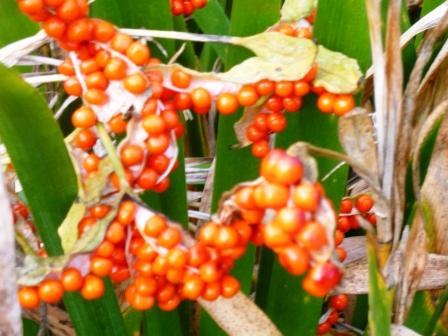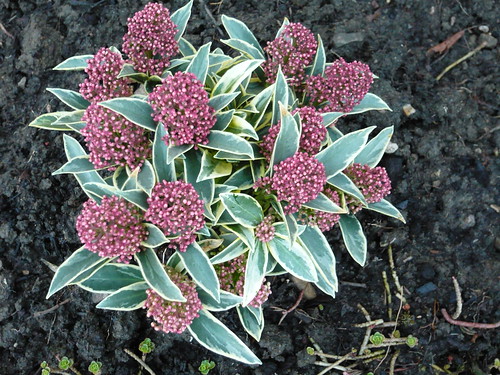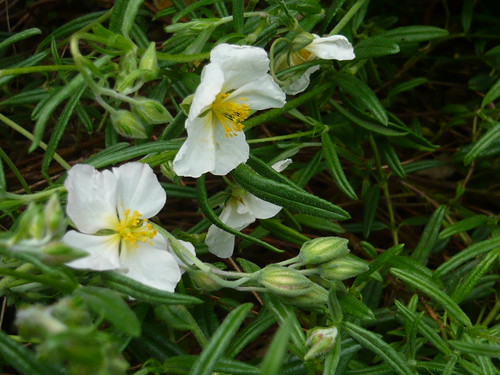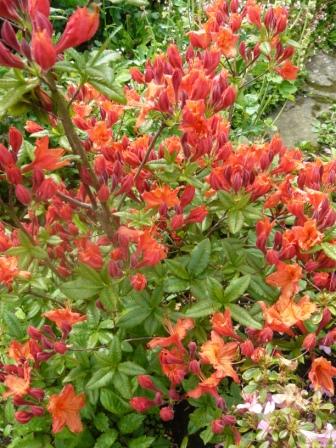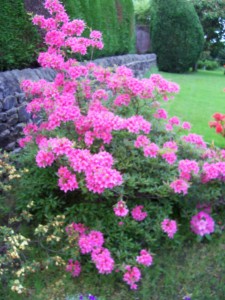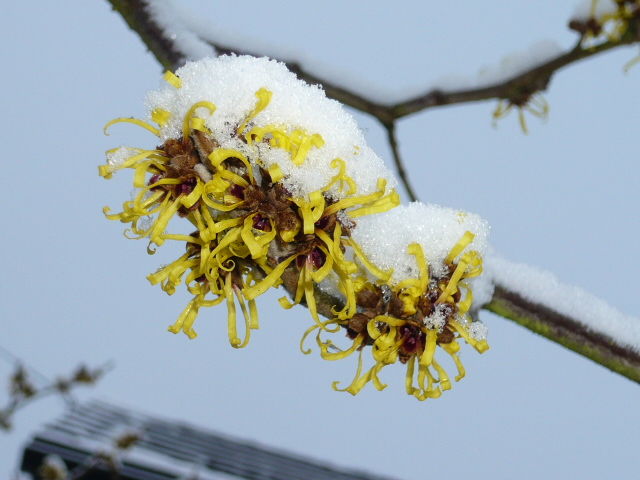Iris foetidissima Stinker For Valentines Day
This is not the Iris for Saint Valentines Day! There are sweeter smelling plants but the seed heads of Iris foetidissima are a striking orange at the end of the season when there is less colour in the garden. Before opening the seed heads swell to a bulbous green head that cracks open to reveal masses of red, orange or yellow berries that the birds seem to leave alone of long periods well into winter.
The sword like leaves are very tough and this iris can thrive on neglect. Eventually clumps need chopping down as the centre becomes congested. Dead leaves need tidying but this Herbaceous UK native is evergreen.
Limniris – Stinking Iris Series
- Plants with strong smells are often using the aroma to attract pollinators.
- What is unpleasant to some people can be OK to others.
- Iris foetidissima citrina is a pale yellow and brown flowering form
- This is the only Iris that can be recommended for dry shade even under a tree.
Knock Knock?
- Who is there
- Iris
- Iris who
- Irish stew in the name of the law
